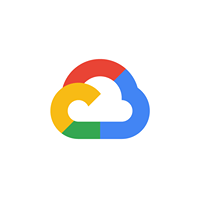What is the Cloud and What Does it Mean to Me?
 “Buzzwords” are very popular in the tech industry, but these often vague and uninformative terms are not always clear to consumers. One of these terms is “the cloud,” one that everyone knows but of which fewer can explain the particulars. To put it simply, it refers to software and services that operate on the Internet rather than your computer, which you can access in a browser like Microsoft Edge, Firefox, or Google Chrome as well as some dedicated mobile apps. When your data is in the cloud, or you work in the cloud, that data goes somewhere for storage. In the case of the cloud, is goes to numerous locations from which a network of servers can find and deliver it when needed. With remote servers handling most computing and storage, you can do any work on any computer and access it from any other computer with an Internet connection at any time.
“Buzzwords” are very popular in the tech industry, but these often vague and uninformative terms are not always clear to consumers. One of these terms is “the cloud,” one that everyone knows but of which fewer can explain the particulars. To put it simply, it refers to software and services that operate on the Internet rather than your computer, which you can access in a browser like Microsoft Edge, Firefox, or Google Chrome as well as some dedicated mobile apps. When your data is in the cloud, or you work in the cloud, that data goes somewhere for storage. In the case of the cloud, is goes to numerous locations from which a network of servers can find and deliver it when needed. With remote servers handling most computing and storage, you can do any work on any computer and access it from any other computer with an Internet connection at any time.
The advantages of the cloud are numerous, and it essentially guarantees you will never suffer what before its existence could be cataclysmic file loss. The cloud is now the standard for data storage, and has spawned services from major companies that include Google Drive, Apple’s iCloud, Netflix, Yahoo Mail, Dropbox, Microsoft’s OneDrive, and more. You can access your information on any device with an Internet connection anywhere. For instance, with Google Docs you can edit a file on a PC at home, continue editing it on your office computer, and have a coworker add edits from his or her computer, even at the same time. With Amazon’s Cloud Drive, you can store and view all of your photos on the cloud without using any of your computer’s internal storage. Verizon Cloud offers more secure cloud storage to automatically back up and synch content on between smartphones, tablets, computers, and more for incredible accessibility.
Cloud computing as an idea has existed for longer than most would think as a means of achieving online safety via data backup and protection from major loss and as a means of unlimited storage, breaking the maximum capacity, file size, and other limitations of any previous data storage options in an unprecedented way. The term itself appeared sometime around 1993, there was some development in 200, and the first cloud software commercially developed was Amazon’s Elastic Compute Cloud in 2006. Google released Google App Engine in 2008, and even NASA got into it with OpenNebula, which was the first open-source software for deploying private and hybrid clouds, and as a sort of international “alliance” of clouds. Now, just about everyone stores nearly everything in the cloud, and there are no signs that this technology will be losing momentum anytime soon.
Filed under: technology



